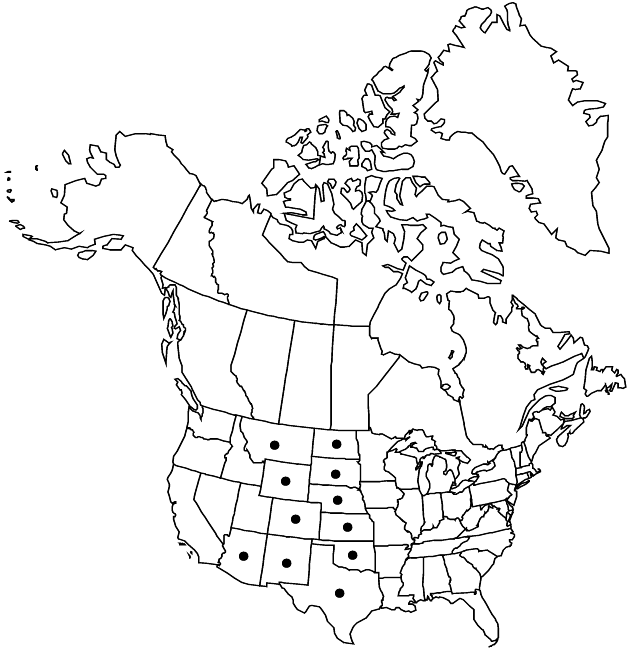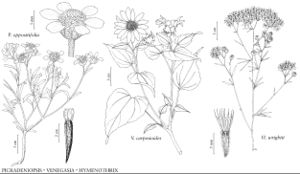Picradeniopsis oppositifolia
in N. L. Britton, Man. Fl. N. States, 1008. 1901.
IllustratedEndemic
Basionym: Trichophyllum oppositifolium Nuttall Gen. N. Amer. Pl. 2: 167. 1818
Synonyms: Bahia oppositifolia (Nuttall) de Candolle
Treatment appears in FNA Volume 21. Treatment on page 385.
Plants ± erect or spreading, 3–15 (–20+) cm. Leaf lobes lanceolate to linear, 10–25+ × 1–3 (–8) mm, faces ± canescent-scabrellous and glanddotted. Involucres broadly turbinate to hemispheric, 5–6+ × 6–9+ mm. Ray-florets 3–5 (–6); corollas pale-yellow, laminae 3–5 mm. Disc-florets 30–60+; corollas 3.5–5 mm. Cypselae 3–5 mm, usually glanddotted, seldom hirsutulous; pappus-scales usually ovate or elliptic to obovate, sometimes lanceolate, 0.5–1.5 mm. 2n = 48.
Phenology: Flowering Jun–Oct.
Habitat: Roadsides, saline flats, shale sites
Elevation: 900–2500 m
Distribution

Ariz., Colo., Kans., Mont., Nebr., N.Mex., N.Dak., Okla., S.Dak., Tex., Wyo.
Discussion
Selected References
None.
Lower Taxa
None.
... more about "Picradeniopsis oppositifolia"
introrse +
connate +
herbaceous +
scarious +
absent +
hirsute +
papillate +
corymbiform +
continuous +
decurrent +
lobed +
winged;ribbed;winged;ribbed +
1;15 +
stigmatic +
6;80 +
absent +
zygomorphic +
pale-yellow +
nerved +
dimorphic +
hirsutulous +
3mm;5mm +
staminate +
straight +
canescent-scabrellous +
distinct +
proximal +
1;5 +
bisexual +
dispersed +
singly +
discoid +
singly +
indeterminate +
Present +
surrounding +
broadly turbinate;hemispheric +
opposite +
cauline +
2-carpellate +
inferior +
attached +
anatropous +
persistent +
fragile +
falling +
aristate +
tough +
thick +
absent +
connate +
persistent +
distinct +
falling +
unequal +
in N. L. Britton, Man. Fl. N. States, +
1901 +
pistillate +
absent +
fertile +
epaleate +
pitted +
convex +
fibrous +
distinct +
exalbuminous +
modifed +
1;1;2 +
alternate +
branched +
2-branched +
papillate +
Picradeniopsis oppositifolia +
Picradeniopsis +
species +
campanulate +
longer +
equaling +
perennial +
